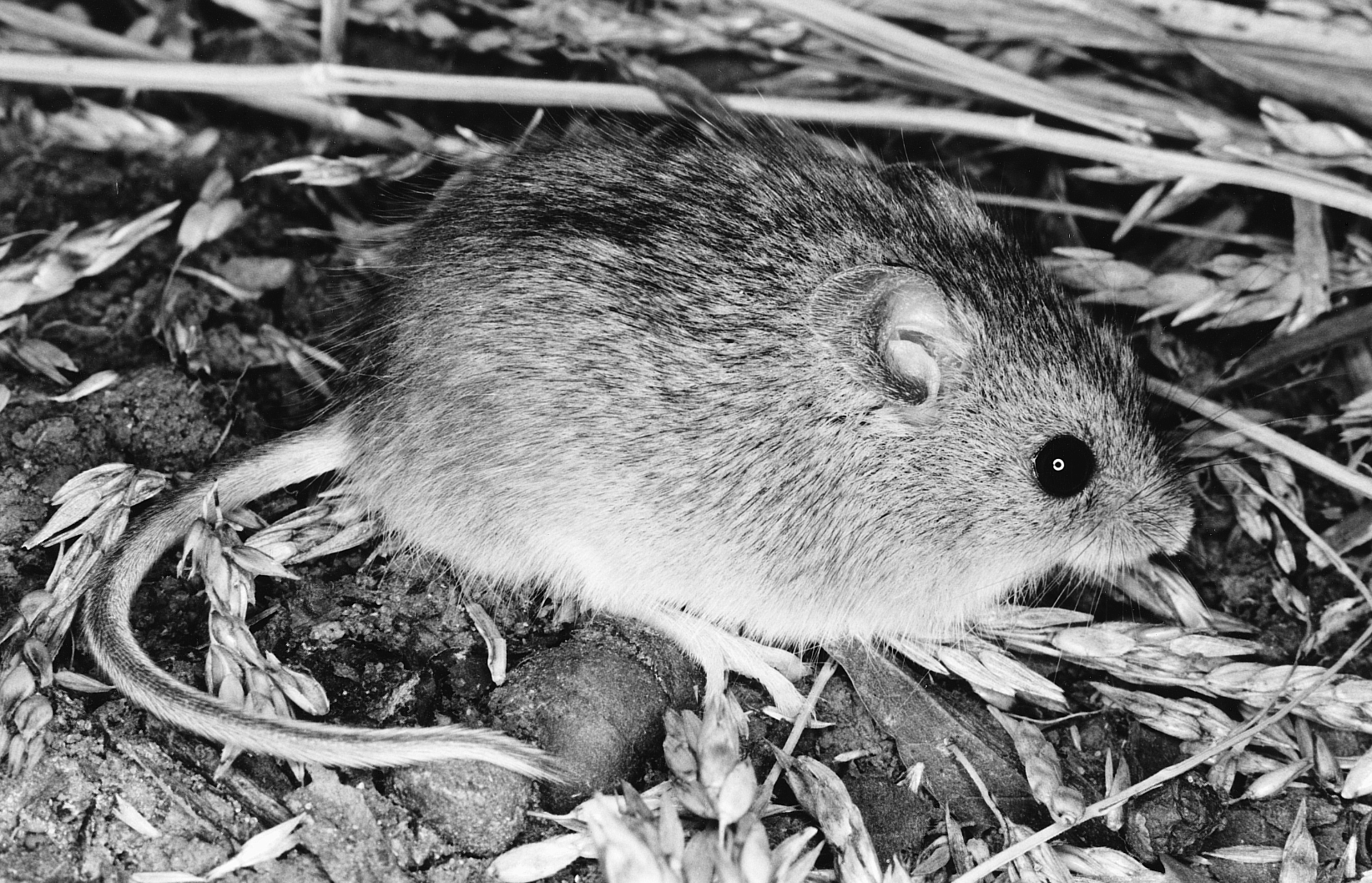PLAINS HARVEST MOUSE
Reithrodontomys montanus (Baird 1855)
Order Rodentia : Family Cricetidae
DESCRIPTION. A small harvest mouse about the size of R. humulis and considerably smaller than R. megalotis and R. fulvescens; tail usually less than half of total length and distinctly bicolor, dark above and light below; upperparts mixed brown and pale yellowish gray; outside of ears and flanks pale yellowish brown; underparts dull whitish. Dental formula: I 1/1, C 0/0, Pm 0/0, M 3/3 × 2 = 16. Averages for external measurements: total length, 116 mm; tail, 54 mm; hind foot, 15 mm. Weight, 6–10 g.

DISTRIBUTION. Found in western and central parts of state, east and southeast to Grayson, Madison, Bexar, and Val Verde counties.

SUBSPECIES. Reithrodontomys m. griseus throughout most of the range in Texas and R. m. montanus in the Trans-Pecos region.
HABITS. These mice appear to prefer climax, or nearly climax, well-drained grasslands. They also are known to occupy overgrown highway right-of-ways with mixed grasses and forbs, such as sunflowers. Other suitable habitats include hayfields, moderately grazed pastures, sagebrush habitats, riparian habitats, and abandoned fields. In Brazos County, they occur most commonly in coastal prairies where the dominant vegetation is bluestem grass (Andropogon). Their nests are composed of fine grass compacted into small balls and are either in bunchgrass or just beneath the ground in their burrows.
The plains harvest mouse is herbivorous and insectivorous. Its diet includes mostly grass seeds and some vegetation, but insects are consumed in minor amounts. Seeds are consumed from brome, grama, bluestem, foxtail, and other grasses. The seeds and flower heads of broomweed, ironweed, and snow-on-the-mountain are known to be eaten.
Available data indicate a yearlong breeding period, at least in Texas. A female captured 13 January near Bryan gave birth to four young in the trap; a pregnant female was trapped in October. A captive gave birth to litters in September, October, March, and April. The gestation period is approximately 21 days; the number of young per litter ranges from two to five, averaging three. At birth, the pups are blind, naked, and weigh about 1 g. They are well haired in 6 days, their eyes open in 8 days, and they are weaned in about 14 days. They are as large as adults in 5 weeks and sexually mature in about 2 months.
Home ranges of R. montanus vary from 0.23 ha to 0.84 ha (0.5–2.0 acres) in size in East Texas. Maximum distances moved in an area are small, and roadways may constitute effective barriers to their dispersal. These mice are active throughout the year and do not hibernate.
POPULATION STATUS. Uncommon. This is another species of harvest mouse that generally occurs in low numbers and is seldom encountered. The plains harvest mouse probably reaches the southern edge of its distributions in Texas and is more common in the northern plains states.
CONSERVATION STATUS. The IUCN lists the plains harvest mouse as a species of least concern, and it does not appear on the federal or state lists of concerned species. This species appears to be stable over most of its range, with the possible exception of populations in the Blackland Prairies; however, they are seldom captured in large numbers by mammalogists. The continued degradation and loss of grassland habitat constitutes a potential future threat to this harvest mouse.
From The Mammals of Texas, Seventh Edition by David J. Schmidly and Robert D. Bradley, copyright © 1994, 2004, 2016. Courtesy of the University of Texas Press.
Natural Science Research Laboratory
-
Address
Museum of Texas Tech University, 3301 4th street, Lubbock, TX 79409 -
Phone
806.742.2486 -
Email
nsrl.museum@ttu.edu

